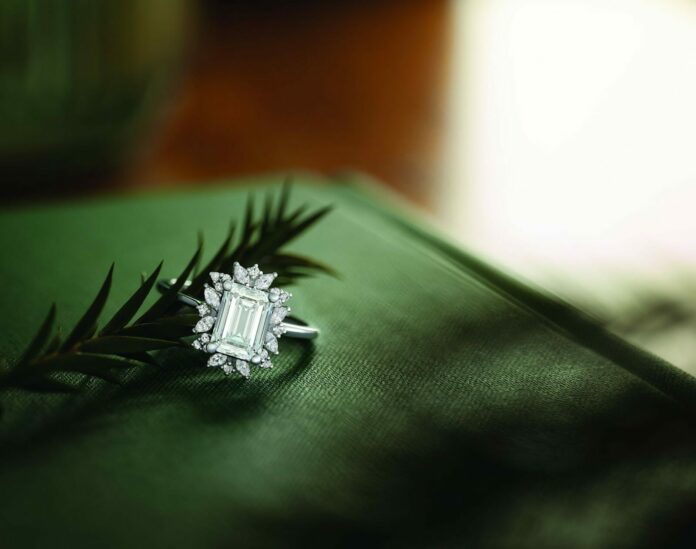Overview of Lab-Grown Diamonds
Diamonds are widely regarded as a symbol of love, commitment, and luxury. Traditionally, diamonds were obtained through mining, but in recent years, there has been a growing interest in man-made diamonds. These diamonds are made by humans in a laboratory setting and have become a popular alternative to natural diamonds.
While they offer many benefits, such as being a more ethical and sustainable alternative to natural diamonds, there are concerns about their resale value compared to natural diamonds. In this article, you will explore the factors that impact the resale market for diamonds and how these human-made diamonds fare in this market.
Investing in Lab-Grown Diamonds is a Good Idea?
Investing in human-made diamonds can be a good idea for several reasons. First, these artificial diamonds tend to be more affordable than natural diamonds, making them an attractive option for investors looking for high-quality diamonds at a lower price point.
This can be especially beneficial for investors looking to purchase larger diamonds or diamonds with unique characteristics, as these types of diamonds can be costly when mined from the earth.
Another advantage of investing in these diamonds is that they are a more ethical and sustainable alternative to natural diamonds. Unlike mined diamonds, man-made diamonds are created using controlled and environmentally friendly processes that avoid the harmful environmental and social impacts of diamond mining.
As a result, these diamonds can be a more appealing option for investors concerned about their investments’ ethical and environmental impact.
In addition, artificial diamonds tend to have high-quality standards that are comparable to natural diamonds, ensuring that they hold their value over time. This is especially true for diamonds certified by reputable organizations like the Gemological Institute of America (GIA), which sets strict standards for diamond grading and certification.
How Are The Diamonds Actually Priced?
Diamonds are priced based on their 4 Cs: carat weight, color, clarity, and cut. Each of these factors plays a role in determining the quality and value of a diamond.
- Carat weight is the measure of how much a diamond weighs. The heavier the diamond, the more valuable it is.
- Color refers to the amount of color in the diamond, with the most valuable diamonds being colorless. Diamonds are graded on a color scale from D (colorless) to Z (light yellow).
- Clarity refers to the number of imperfections, or inclusions, in the diamond. The fewer imperfections a diamond has, the more valuable it is.
- Cut refers to the way the diamond has been cut and shaped. A well-cut diamond will reflect light in a way that makes it appear more brilliant and sparkly and is, therefore, more valuable.
In addition to these factors, the diamond market can be influenced by various other factors, such as supply and demand, economic conditions, and the seller’s reputation.
Diamond Resale Market
When it comes to the resale market for diamonds, it can be challenging for these artificial diamonds to hold their value compared to natural diamonds. One reason for this is that natural diamonds have a long-standing reputation as a precious commodity that has been sought after for centuries.
As a result, natural diamonds tend to hold their value more consistently over time, especially for high-quality diamonds with unique characteristics.
Are Lab-Grown Diamonds Destroying the Diamond Industry?
There is some concern that the rise of diamonds made by humans will have a negative impact on the natural diamond industry. However, this is unlikely to be the case. While human-made diamonds are becoming more popular, they still only make up a small percentage of the diamond market. Additionally, there will always be a demand for natural diamonds due to their rarity and prestige.
Are Lab-Created Diamonds Profitable?
While human-made diamonds may be cheaper than natural diamonds, they are not necessarily profitable. This is because they do not hold their value in the same way that natural diamonds do. Unlike natural diamonds, artificial diamonds are not rare or unique and do not have the same emotional and historical significance as natural diamonds. As a result, they are not seen as a good investment by many buyers.
However, human-made diamonds may still be profitable for those looking for a cheaper alternative to natural diamonds. They may also be profitable for those who are in the business of manufacturing or selling man-made diamonds.
What to do if you want to sell your diamond?
If you have a diamond that you want to sell, it is important to work with a reputable dealer. A reputable dealer will be able to assess the value of your diamond and provide you with a fair and reasonable offer. Having your diamond certified by a reputable grading laboratory, such as the Gemological Institute of America (GIA). This will help you to get the best possible price for your diamond.
Before you sell your diamond, it is also important to understand its value. The value of a diamond is determined by the 4 Cs: carat weight, color, clarity, and cut. These factors are used to determine the diamond’s quality, and diamonds that score high are more valuable and, therefore, more expensive.
Understanding the current market conditions before you sell your diamond is important. The diamond market can fluctuate, and the value of your diamond may be affected by supply and demand factors.
Bottomline
Artificial diamonds offer a range of benefits, including ethical and sustainable production methods, affordable pricing, and high-quality standards. However, their resale value may be weaker than natural diamonds due to a lack of historical prestige and perceptions of rarity.
Additionally, the diamond resale market is highly competitive, and buyers typically look for natural rather than artificial diamonds. If you want to sell your diamond, working with a reputable dealer and having your diamond certified by a reputable grading laboratory is important.
While these human-made diamonds may be a good option for those who cannot afford them, they should not be viewed as a substitute for natural diamonds in terms of investment or resale value.



